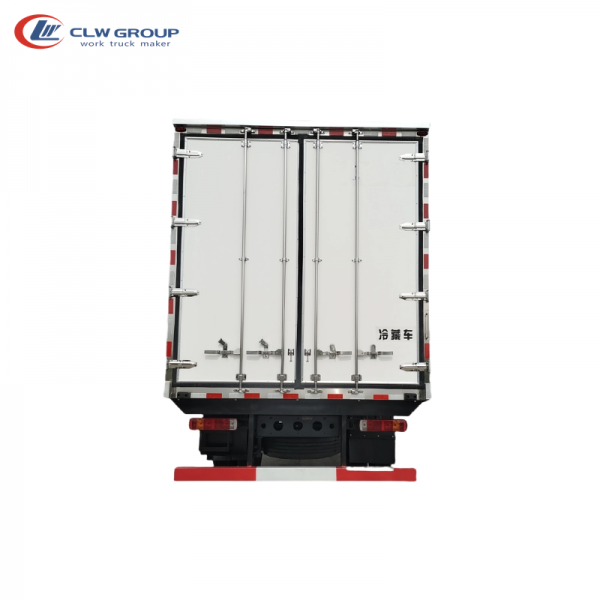Introduction
Truck mounted cranes are essential pieces of equipment in various industries such as construction, transportation, and logistics. These cranes provide the capability to lift and move heavy loads with precision and efficiency. However, one of the often-overlooked aspects of truck mounted cranes is the noise they produce during operation. Noise levels generated by these cranes can have a significant impact on both operators and bystanders, leading to potential health and safety concerns. In this article, we will delve into the world of truck mounted crane noise levels, exploring the sources of noise, its effects, regulations, and mitigation strategies.
Sources of Noise in Truck Mounted Cranes
Truck mounted cranes are equipped with hydraulic systems, engines, and other mechanical components that contribute to the generation of noise during operation. The primary sources of noise in truck mounted cranes include:
1. Engine Noise: The diesel engines used to power truck mounted cranes produce a considerable amount of noise, especially during acceleration and heavy lifting operations. Engine noise can be a significant contributor to the overall noise levels generated by the crane.
2. Hydraulic System Noise: The hydraulic systems in truck mounted cranes are responsible for controlling the movement of the crane's boom, jib, and other components. The operation of hydraulic pumps, cylinders, and valves can produce high-pressure fluid flow noise, resulting in additional noise emissions.
3. Mechanical Noise: The movement of various mechanical components, such as gears, bearings, and cables, can also generate noise during crane operation. This mechanical noise can be amplified when the crane is under heavy load or operating in challenging conditions.
4. Impact Noise: When the crane makes contact with the load or the ground, it can create impact noise that adds to the overall noise levels. This type of noise is often sudden and can be particularly disruptive in quiet environments.
Effects of High Noise Levels
Exposure to high levels of noise generated by truck mounted cranes can have a range of negative effects on both operators and bystanders. Some of the potential consequences of prolonged exposure to high noise levels include:
1. Hearing Damage: Noise-induced hearing loss is a common occupational health hazard associated with high noise levels. Prolonged exposure to loud noise can damage the delicate hair cells in the inner ear, leading to permanent hearing loss over time.
2. Stress and Fatigue: Continuous exposure to noise can cause stress and fatigue among crane operators and workers in the vicinity of the crane. High noise levels can disrupt concentration, impede communication, and increase overall stress levels.
3. Communication Difficulties: Excessive noise can hinder communication between crane operators and other workers on the job site. This can lead to misunderstandings, errors, and potentially dangerous situations.
4. Disturbance to Surrounding Areas: Truck mounted cranes operating in urban or residential areas can cause disturbance to nearby residents, leading to complaints and potential legal issues.
Regulations and Standards
To address the potential health and safety risks associated with high noise levels from truck mounted cranes, various regulations and standards have been established to limit noise emissions and protect workers and the general public. Some of the key regulations and standards related to noise levels in crane operations include:
1. Occupational Safety and Health Administration (OSHA) Standards: OSHA sets limits on occupational noise exposure to protect workers from hearing loss. The OSHA permissible exposure limit (PEL) for noise is 90 decibels (dBA) averaged over an 8-hour workday.
2. European Union Noise Directive: The European Union has implemented the Environmental Noise Directive, which aims to assess and reduce environmental noise levels. This directive includes provisions for noise mapping and action plans to mitigate noise pollution from various sources, including industrial equipment like truck mounted cranes.
3. International Organization for Standardization (ISO) Standards: ISO has developed standards such as ISO 6395:2008, which specifies noise limits for earth-moving machinery, including cranes. Compliance with ISO standards can help manufacturers and operators ensure that their equipment meets acceptable noise levels.
Mitigation Strategies
To reduce noise levels from truck mounted cranes and mitigate the associated health and safety risks, various strategies can be employed. Some effective mitigation measures include:
1. Regular Maintenance: Ensuring that the crane is properly maintained can help reduce noise levels caused by worn-out or malfunctioning components. Regular inspections and maintenance checks can help identify and address potential sources of noise.
2. Noise Barriers and Enclosures: Installing noise barriers and enclosures around the crane can help contain and reduce noise emissions. These physical barriers can absorb and block sound waves, minimizing the impact of crane noise on operators and bystanders.
3. Noise Reduction Technologies: Implementing noise reduction technologies such as mufflers, silencers, and vibration dampening systems can help lower noise levels from the crane's engine, hydraulic system, and mechanical components.
4. Operator Training and Awareness: Providing training to crane operators on the importance of noise control and safe operating practices can help raise awareness of the potential risks associated with high noise levels. Rescue truck disaster response can be educated on how to minimize noise emissions during crane operation.
Conclusion

Truck mounted cranes play a vital role in various industries, but their operation can generate high levels of noise that pose health and safety risks to operators and bystanders. Understanding the sources of noise, its effects, regulations, and mitigation strategies is essential to address these risks effectively. By implementing proper maintenance practices, utilizing noise reduction technologies, and adhering to regulatory standards, the impact of truck mounted crane noise levels can be minimized, creating a safer and more conducive work environment for all.
